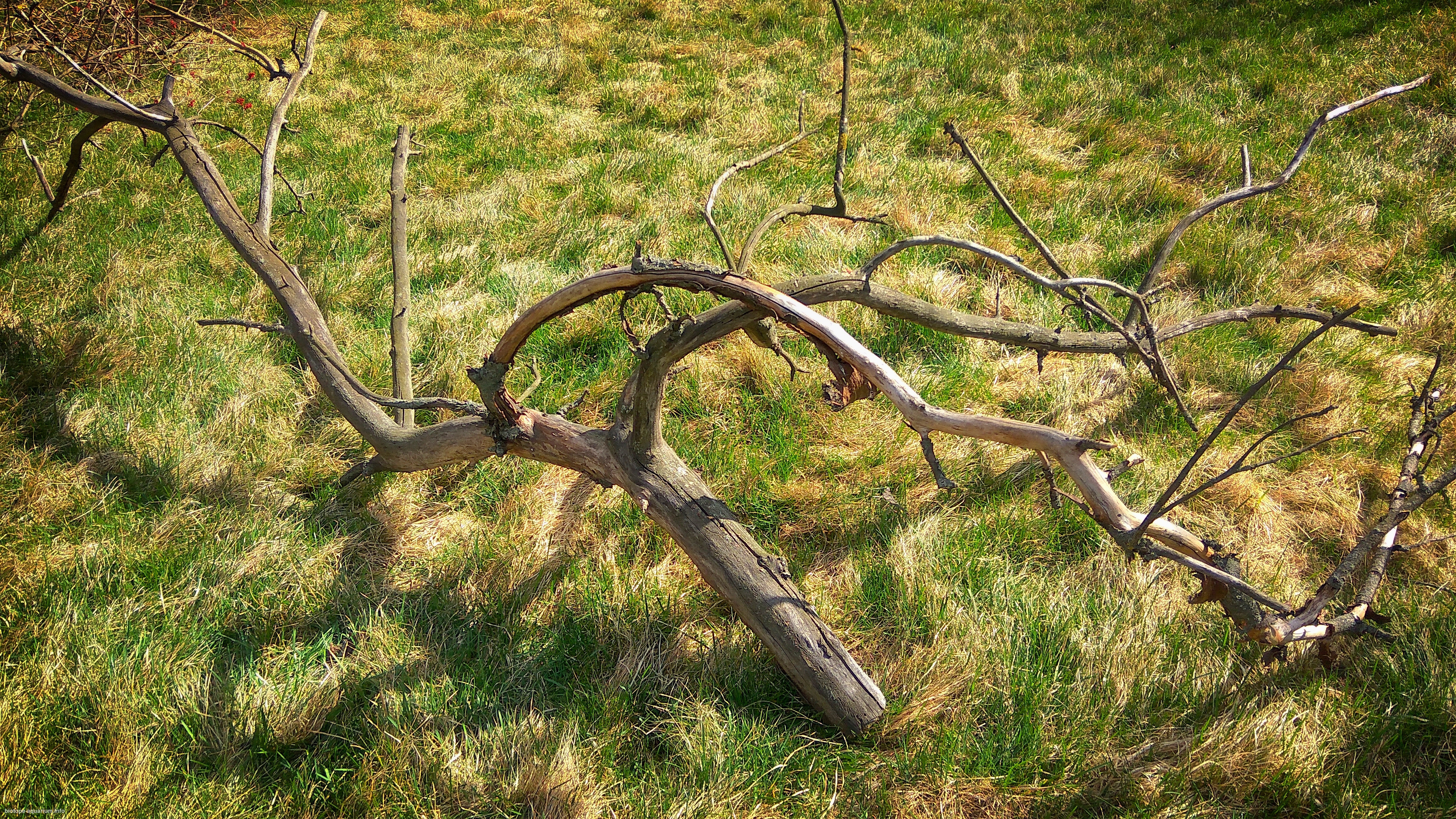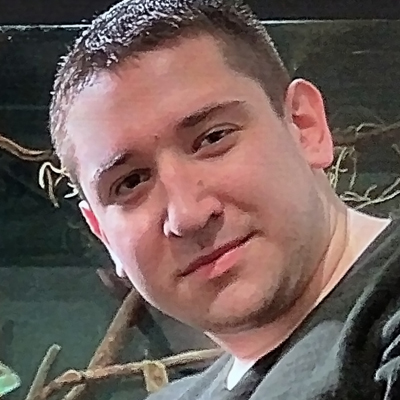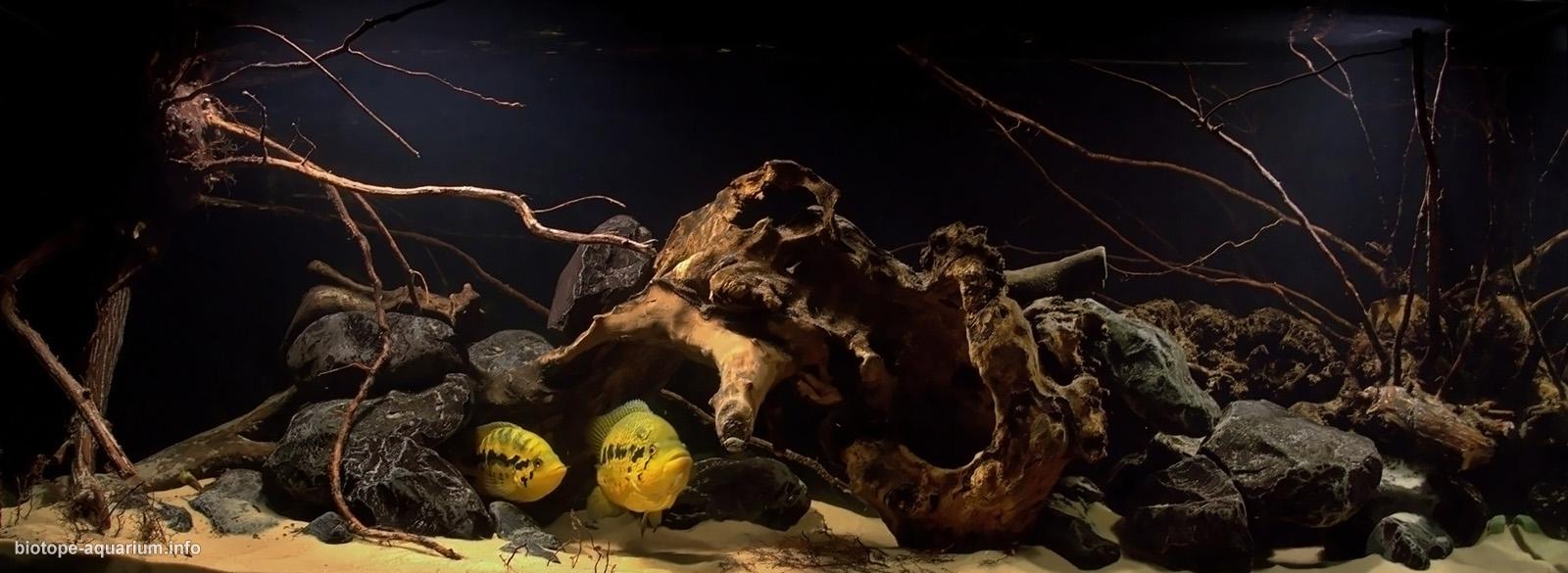Biotope aquarium design as a window to the underwater world

What should a biotope aquarium look like? This question is as vast, as the nature that surrounds us. Nature provides all possible options for creativity to the aquarist, who then decides to make his aquarium a part of nature. A variety of biotopes with the landscapes enclosed in the aquariam attracts a person with something real and genuine. Once unknown and alien to a man, the underwater world is now before his eyes. The desire to research appears on a subconscious level, forcing to peer into the smallest details, observing what was previously impossible and become available only with the help of modern technologies that allow maintaining a delicate balance in the closed ecosystem of an aquarium. A subjective view on the beauty of underwater landscapes can satisfy the needs of most aquarists looking for the right picture for their eyes, therefore each of us can have his own point of view regarding biotope aquariums. I would like to tell you how I see this rapidly developing direction and how I managed to put it into my aquarium in preparation for the international Biotope Aquarium Design Contest 2017.
The first thing I did before starting to work on the design, I compared my desires with my capabilities. Having an aquarium with dimensions 160×50×60(h) cm and a volume of 480 litres, I wanted to create a biotope of an South American water body. Therefore, in the first place, it was necessary to determine the specific water body, selected according to the decorations available to me at that time and suitable for the species composition of aquatic animals. No matter how simple this task looked, it took me three months to prepare and collect information.

I happened to see in my neighbour’s yard an old half-dead apple tree, half dry and severely damaged during snowfalls. The branches of the tree curved under the heavy weight of the snow. I immediately realized that this was what I needed. After short negotiations with neighbours and uncomplicated manipulations with the chainsaw, the future driftwood of about three meters in length and one meter in height was mine. Its condition was perfect for keeping it in water. The solid, completely dried tree trunk, an amazing texture without any damaged parts gave me optimism. It was a good luck for me! I started work. In my spare time I began studying the rivers of South America, comparing my decorations with the underwater and above water landscapes of different water bodies. After many weeks of searching, I came across the Suriname River in the Republic of Suriname, namely one of its tributaries: the Gran Rio. Sufficient data and videos allowed me to explore and choose the exact place on this huge river, which I wanted to recreate in my aquarium. The Avadana rapids and their nearest sites attracted my attention most of all, as I came across a large video collection of underwater footage of this region. I was impressed by the underwater coastal areas with calm water with huge pieces of driftwood laying on yellowish sand and places with stone piles from the hills of the Eilerts de Haan Mountains. I wanted to show, not just a biotope of an existing water body, but something hidden, at first glance nothing unusual, but alive and beautiful. Looking at my aquarium, I wanted the viewer to immerse in the underwater landscapes of the banks of the Gran Rio tributary, to see the rays of the sun breaking through the muddy water playing on the sand between the rocks appearing out of the ground and driftwood frozen in eternity, becoming the home for many species of fish.


But, unfortunately, no matter how big aquarium we have, it will never compare to an existing river. Contrary to our fantasies and desires, this imposes some limitations on us. So when keeping the underwater world in our homes we must strictly adhere to certain rules. One of the most important rules is the viability of an aquarium. Whatever ambitious plans you have, you should never, I repeat: never ignore this rule for the sake of other goals. Therefore, before the construction of the design, you should plan, calculate all the nuances and make sure that the aquarium will be viable. In my case, I was ready for this. My aquarium has been set up for four years; it had two external filters with a capacity of 1500 l/h, a sump of 90 litres and a phytofilter, which was more than enough to cope with unpredictable filtration problems both during aquarium designing and functioning in the future. The second rule, I stick to, is the maintenance of an aquarium. For a biotope aquarium, this is extremely important. You should always think over when constructing a design, how you will maintain it and how much time you are willing to spend on it. Aquaria with fast-growing plants, for example, will require more time to care, and if you do not have enough time, then your creation in a few weeks will turn into something unattractive, thus leaving only a negative emotions from such aquaria. In my case, when composing my decorations, I made free access to all the important elements of my aquarium, which allowed me to easily maintain it and take care of it in the future.
The main idea of the design of my aquarium was to place a single whole piece of driftwood as the main element of the layout. To my regret, at the time of setting up my aquarium I realized that this was impossible. Either its size did not match the dimensions of my aquarium, or branches effected its maintenance, or it looked unnatural. So to achieve what I wanted, I had to make a composition of different pieces of driftwood, which merged with each other, emphasizing the design itself. As a result, single solid driftwood consisted of four separate parts of a sawn three-metre tree branch.
An important element of the layout, which increased the effect of presence, was lighting. To solve this problem I had to approach creatively. I prepared a fair amount of tea and began studying the approach of other people who had solved similar problems in their own aquaria. Studying the work of other participants of the international competition in the BIOTOPE AQUARIUM DESIGN CONTEST 2016 magazine, as well as other people’s work in the internet. I began comparing their lighting with the light in natural water bodies, but in my opinion something was missing, and it could not satisfy my requests in any way. But how could I achieve a natural sensation with such a relatively small depth of the aquarium as I had? Looking at underwater photos over and over again, I noticed that the lighting in a water body was spreading unevenly; there were areas with static and more dynamic light. I realized that in order to create an effect as close as possible to the natural, I need to do the same in my aquarium. So I decided to install two lamps of different power and colour temperature: 12 watts 3000 K and 20 watts 4000 K, to make a different colour distribution and to add a yellowish hint to the water like in a natural water body. A 12 Watt 3000 K lamp was at the rear glass of my aquarium, imitating the shadow from the shore and overhanging trees over it, and the second one – 20 Watt 4000 K – was at the front glass, displaying the light of areas with open water. The water moved only at the front glass, so that the light in the back of the aquarium was static, and dynamic in the front, which had a positive effect on the depth of my aquarium. But it did not solve all the problems. Glare, falling on all the glass of my aquarium, showing its dimensions, spoiled the whole picture. Then I came up with the idea to limit the light from the lamps. On the surface of the cover glass and along the back glass I glued a black self-adhesive film with a width of 15 cm to darken 90% of the background, thereby removing glare from it and, smoothly plunging it into the darkness, visually significantly increasing the depth of my aquarium. Also, a 5 cm wide stripe of a black film was glued along the front cover glass to remove glare from the front glass. The picture got better. But something was missing, the rays of light were badly seen in the clear water, but I wanted them to stretch out from the surface to the very bottom of my aquarium, creating bands of light, like in natural water bodies at sunrise or sunset. I had to make the water turbid, but how could I do it with good filtration? To solve this problem, I used very fine sand. Having preliminary rinsed it from possible dirt and heated for two hours in the oven, I began alternately putting it by 250 ml into my aquarium, controlling the level of water transparency, bringing it to a natural value. Four of this amount were enough to make the boundaries of the aquarium wash out, and the beams of light stretch to the bottom. The effect of presence was achieved! The only bad thing was that it was impossible to achieve it on an ongoing basis. But even those 20-30 minutes that allowed me to go under the water and feel myself many kilometres away from home, gave me even more optimism to go further.

While setting up my aquarium, I forgot about the most important thing, the design of my aquarium would never be biotope without: fish. It was already 7th of July, a few months left before the start of the BADC 2017. That summer was not the best for buying fish, because the market was empty and Geophagus surinamensis I needed for my work, were out of stock. A little worried, I reassured myself that I still had time. Having support of my friends, I searched for fish harder, but I had no desired result. August was over, September started, less than a month left until the deadline for accepting entries for the international Biotope Aquarium Design Contest 2017, and I had no fish I needed to participate. I started thinking that, unfortunately, I would have to miss the contest this year, which strongly affected my good spirit. Another week was over, and my aquarium was still dead, and only fish could add some life to the layout of the Gran Rio, the tributary of the Suriname River, but I still had no fish. In the remote dark part of my room there was a piece of nature as if frozen in time, waiting for its time. I began counting down the days before the contest. I accepted the circumstances, mostly happened because of me. They did not give me the opportunity to participate this year. But after a couple of days, at night, I read a message from my friend Eugene, who wrote that that day an announcement about the sale of Geophagus surinamensis was published. I wrote to the seller at the moment and booked the fish. In a day I already had the fish. Eugene not only helped me, but also gave me the strength to work on the aquarium further. Unfortunately, the fish that arrived to me was only 9 cm long, its gray adolescent colour did not yet demonstrate the set of colours that the adults had, but despite this, the fish fit perfectly into the dim colours of the layout that imitated the underwater biotope.
The next two weeks before the contest were hard for me. I shot about two hours of video, of which only two and a half minutes were sent to the contest, more than 4 GB of photos, of which only the six best were selected. I took more than 10 hours to process and edited the video… You can see the final result of my work “The Republic of Suriname, Gran Rio, the tributary of the River Suriname, downstream from the Avadana rapids”, with which I was lucky to get to the top ten biotope aquaria of the world, as well as the entries of other contest participants on the official website of the international BIOTOPE AQUARIUM DESIGN CONTEST 2017.
I was glad to participate in this contest, as it teaches many good things, for example, to protect and explore nature, to discover its beauty to show it to the world. The contest teaches to appreciate life and, most importantly, it gives us an understanding that we are closely connected. I hope this article was interesting and informative for you. Perhaps my experience gained during the preparation for the contest will help you to put your ideas into reality, which will allow making one more step towards understanding that the nature and the man is a whole.

I want to thank Oleg Labutov and his team for the contest, which has changed and continues changing the point of view to the aquaristic around the world.
Bogdan’s aquaria


